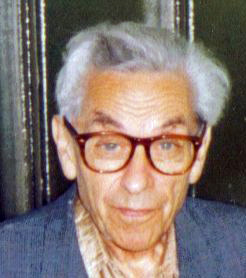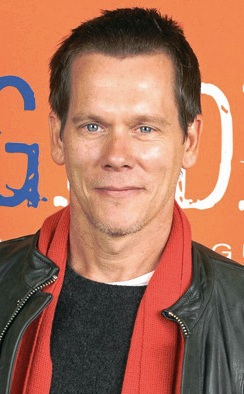"Constructing Carmichael numbers through improved subset-product
algorithms," co-authored with the late Red Alford, as well as Steven
Hayman and Andrew Shallue, published online last summer, has been placed in the March 2014 issue of Mathematics of Computation.
That means if you want to cite it, you can now cite it as:
Constructing Carmichael numbers through improved subset-product
algorithms.
Math. Comp. 83 (2014), no. 286, 899-915.
I'm still waiting for it to appear in MathSciNet, so I can calculate my collaboration distance to various friends and acquaintances.
Wednesday, December 18, 2013
Monday, November 04, 2013
Towards an Erdős–Bacon number of seven

 When I noted earlier this year that I was on my way to having an Erdős number of 3, due to either of two upcoming papers, a friend asked if I had an Erdős–Bacon number. My lack of a film career prompted me to answer, "no". I once appeared as an extra in a scene filmed for Lucid Days in Hell, but that scene was cut from the movie. So I didn't see how that helped.
When I noted earlier this year that I was on my way to having an Erdős number of 3, due to either of two upcoming papers, a friend asked if I had an Erdős–Bacon number. My lack of a film career prompted me to answer, "no". I once appeared as an extra in a scene filmed for Lucid Days in Hell, but that scene was cut from the movie. So I didn't see how that helped.But recently while reading a biography of Jim Henson
Well, Henson appeared in The Muppet Movie with Austin Pendleton, who appeared in Starting Over with Kevin Bacon. Boom, if you allow TV shows (and you probably shouldn't), I have a Bacon number of four, and an Erdős–Bacon number of seven.
Sunday, September 08, 2013
Updated version of "Constructing Carmichael numbers through improved subset-product algorithms"
A new version of "Constructing Carmichael numbers through improved subset-product algorithms" has been posted to the math arXiv.
From the comments: "Table 1 fixed; previously the last 30 digits and number of digits were calculated incorrectly." This now better matches the version that will appear in Math. Comp.
From the comments: "Table 1 fixed; previously the last 30 digits and number of digits were calculated incorrectly." This now better matches the version that will appear in Math. Comp.
Tuesday, July 16, 2013
Publication of Constructing Carmichael numbers through improved subset-product algorithms
"Constructing Carmichael numbers through improved subset-product algorithms," co-authored with the late Red Alford, as well as Steven Hayman and Andrew Shallue, has been published on-line by Mathematics of Computation.
It looks like all of the 2013 issues of Math. Comp. are filled up, so this will probably be officially a 2014 paper once it appears in print.
As this is my first co-authored paper to be published, I now have a finite Erdős number, namely 3. (Red co-authored with Carl Pomerance and Andrew Granville, who each have an Erdős number of 1.)
(According to MathSciNet, this reduces Shallue's number from 4 to 3, and is Hayman's first paper. This paper, however, is not indexed by MathSciNet yet, which limits my ability to compute some collaboration distances that interest me, as well as raising the possibility that my co-authors have other un-indexed papers.)
I lost my chance at an Erdős number of 1 by deflecting his questions about what I was working on, but, well, I'm not really into Erdős-style collaborations, and I'm comfortable with my style of research.
It looks like all of the 2013 issues of Math. Comp. are filled up, so this will probably be officially a 2014 paper once it appears in print.
As this is my first co-authored paper to be published, I now have a finite Erdős number, namely 3. (Red co-authored with Carl Pomerance and Andrew Granville, who each have an Erdős number of 1.)
(According to MathSciNet, this reduces Shallue's number from 4 to 3, and is Hayman's first paper. This paper, however, is not indexed by MathSciNet yet, which limits my ability to compute some collaboration distances that interest me, as well as raising the possibility that my co-authors have other un-indexed papers.)
I lost my chance at an Erdős number of 1 by deflecting his questions about what I was working on, but, well, I'm not really into Erdős-style collaborations, and I'm comfortable with my style of research.
Friday, April 12, 2013
SERMON 2013 Talk
I am scheduled to give a talk at the SERMON 2013 conference entitled "Collecting primes with p2-1 1163-smooth, or reduced sets for likely solutions to the $620 problem." It is an update to my 2005 talk.
Here are the slides.
Here are the slides.
Subscribe to:
Comments (Atom)